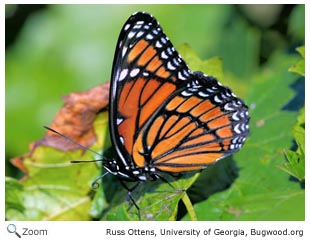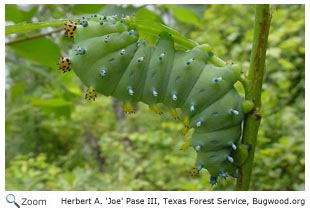Butterflies and moths, like all insects, have an exoskeleton, a pair of compound eyes, a pair of antennae, six jointed legs, and a body segmented into three parts - the head, the thorax, and the abdomen. The antennae and eyes are found on the head along with a pair of proboscis that the butterfly or moth uses to suck nectar. The thorax has three sections and each section has a pair of jointed legs. The two front legs are short and the four rear legs are long. The wings are attached to the thorax and the muscles that move the legs and the wings are found in the thorax. The abdomen contains the digestive, excretory, and reproductive organs. The bodies of butterflies and moths are covered with tiny sensory hairs. Butterflies and moths have many of the same characteristics, but they do have some unique traits. Moths have feathery antennae. When a moth is at rest, its wings are folded back against its body. When a butterfly is at rest, its wings are held upright. Most moth species are active at night, while most butterfly species are active during the day.
|
||||||||||||||



